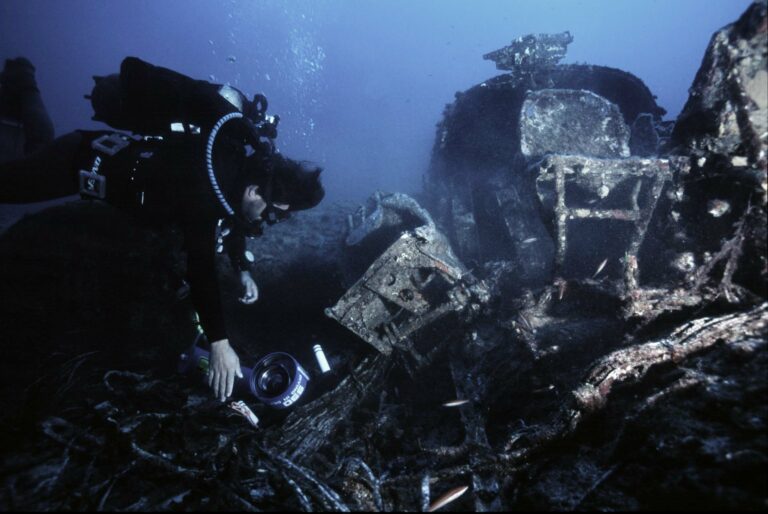We recently brought news of a WW2 Junkers Ju-52 transport plane discovery off mainland Greece, but how about this Ju-88 bomber, wrecked off a Greek island?
VASILIS MENTOGIANNIS, one of the divers who found it in 2005, provided the photos below, and he and writer ROSS J ROBERTSON, curator of ww2stories.org, rate this as one of the most exceptional dives awaiting you in the Aegean.
Yannis ‘John’ Goulelis splashed over the side, leaving Vasilis Mentogiannis entirely alone. Vasilis gazed at the old abandoned lighthouse in one of the remotest locations in the Aegean, his mind in a swirling turmoil of doubt.
Despite an encouraging discovery made yesterday, he pondered the distinct possibility of the two divers never locating their intended target. How could he convey this potential failure to his friends and family, not to mention his magazine editor?
Even if the entire wreck was found soon, the window of opportunity was rapidly closing in, leaving scarcely enough time for careful examination before their scheduled return to Athens.
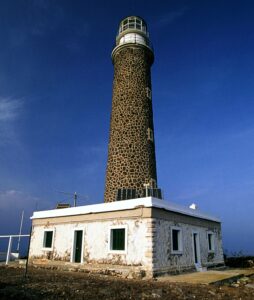
His thoughts were suddenly distracted by a familiar sound. One of John’s decompression buoys had suddenly shot up to the surface, not far from the boat. The implications were two-fold: either the wreck had been found, or his friend was in some kind of trouble.
Vasilis hastily grabbed his mask and fins but, before he could prepare to dive, John broke the surface, removing his respirator to unveil a broad smile. “I found it! It’s right here!” he said, pointing downwards.
The shared relief was palpable. Grabbing the underwater camera and additional lights, Vasilis splashed over the side to join his friend.
“No matter how many years elapse, the very first moment when you encounter a wreck, that initial image remains indelibly engraved in your mind forever,” he says, recalling the event from 2005.
“We were approaching a depth of 32m when, right before us, the eerie sight of a silent aircraft resting on the dark, rocky bottom unfolded. It was genuinely awe-inspiring.”
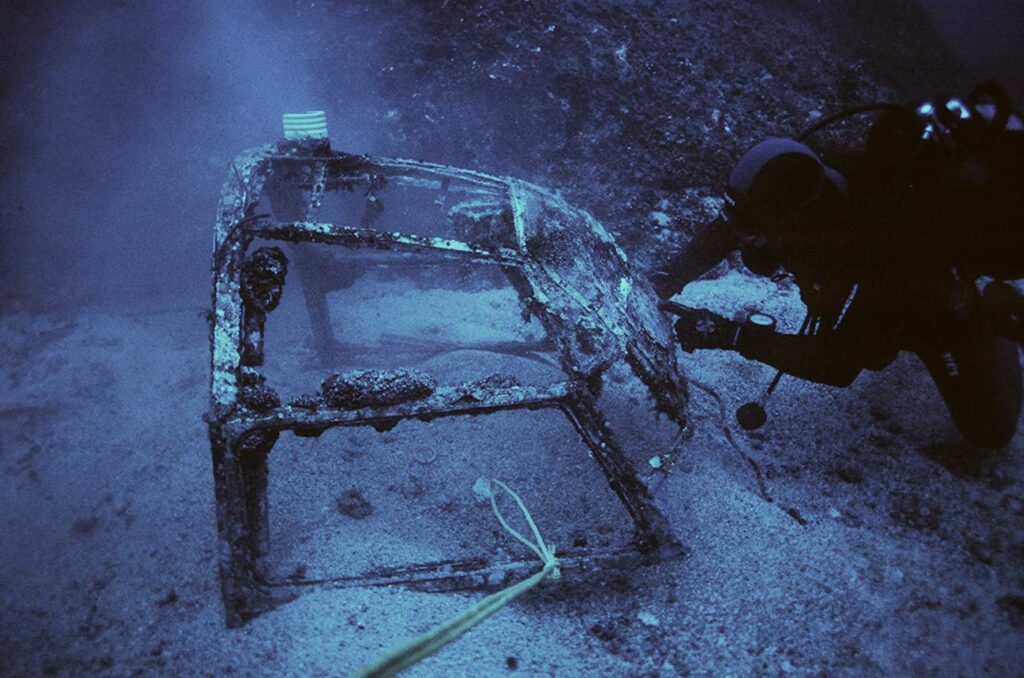


The two professional divers quickly understood why they hadn’t seen the wreck earlier, despite passing nearby at least three times in the past two days. Enclosed by rocky outcrops that formed a trough, the aircraft remained effectively concealed from sight from most angles.
A brief preliminary examination confirmed that the German Junkers Ju-88 bomber was essentially intact. However, given that this was John’s second dive on the same tank, shortage of air rapidly became a serious issue.
“Securing a rope to the wreck for the next day’s descent, we surfaced with a strange mix of excitement and relief engulfing us,” recounts Vasilis many years later. “Quite a moment,” he adds, smiling.
The excitement did little to ensure a restful night’s sleep. The divers were up again early the next morning, loading fresh air tanks and fuel into their rented boat. They were at the little harbour of Steni Vala on Alonissos island, where their local contact and good friend Droso Drosaki had assisted in organising the expedition.
Vasilis and John had initially learnt about the aircraft wreck two years earlier. A delightful taverna meal on a cool summer evening at Steni Vala had been complemented by good wine and enriched with maritime tales told by a local fisherman called Georgios Drosaki. He had even provided them with co-ordinates, inspiring them to explore the site there and then.
“Unfortunately, unfavourable weather conditions intervened, and the opportunity slipped away,” explains Vasilis. “However, the delay did afford us the opportunity to search the archives and look for people who might know more about the story.”
An eyewitness account
That’s when Vasilis had discovered a captivating 1996 interview with Giorgos (George) Agalou, who had been in his mid-20s during the Axis occupation of Greece in WW2. The son of the Psathoura lighthouse-keeper Agalos Agalou, he was on the island with his parents when, on the clear night of 27 May 1942, they were alerted in the small hours by the drone of aircraft engines.
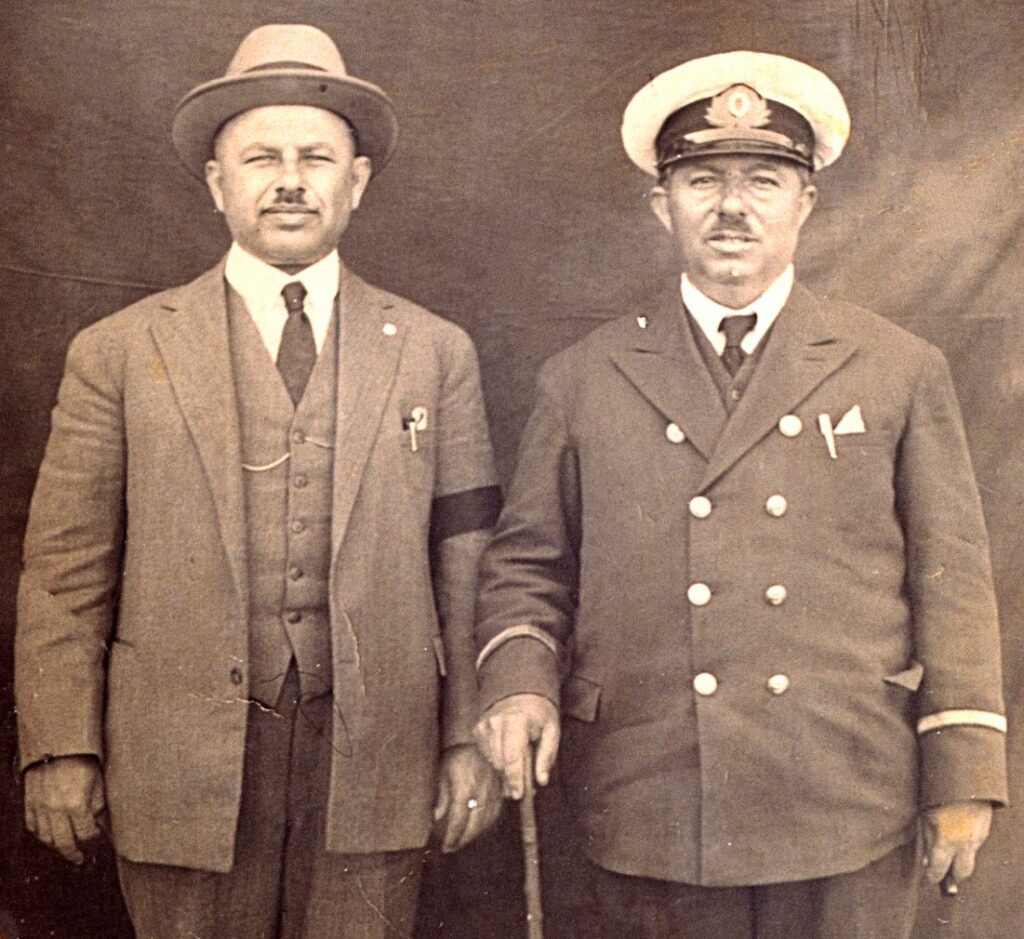
Although the lighthouse was unlit because of wartime restrictions, they feared bombardment and immediately sought refuge outside. A single plane circled above until its engines cut out. Then George had witnessed it make a controlled ditching in the sea.

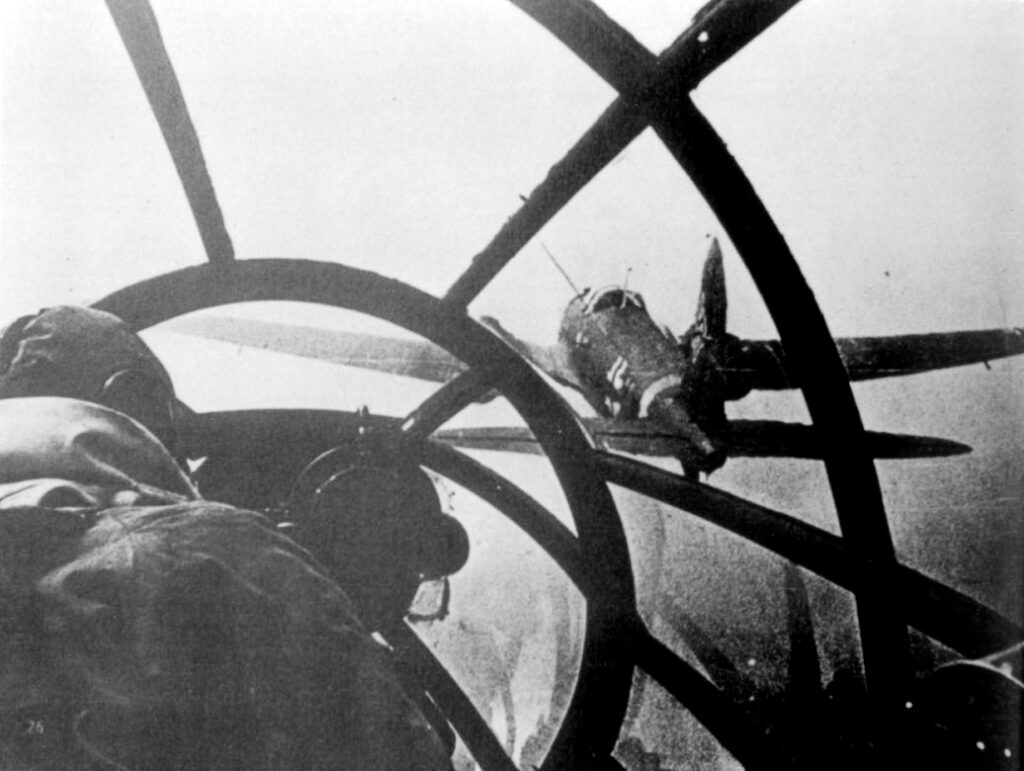
The crew saved themselves in an inflatable life-raft. With George and his father’s help, they reached a point where they could come ashore, and were offered a humble meal.
Fearing poisoning, the Germans refused, but did opt for some raw onions growing in the garden.

Communicating in halting Italian, George and his family learnt that the crew had been heading from Tobruk to Sicily but had altered course because of an Allied pursuit. They were eventually forced to ditch off Psathoura because of their lack of fuel.
George took them to Alonissos on his small boat the next day and, before long, they were united with the German garrison on Skiathos, eventually rejoining their squadron at Elefsina airfield on the mainland.
The dinghy used by the German crew later became a valuable resource for George and many of his relatives, because they used its robust rubber to craft makeshift shoes.
Diving the wreck

The trip from Steni Vala on Alonissos out to Psathoura takes about 75 minutes each way at a speed of 17-18 knots. Now that the lighthouse is automated, this remote area is no longer inhabited. While GPS aids navigation, there is no mobile-phone signal coverage, only VHF radio in case of emergencies.
However, as their excitement over discovering the wreck the previous day surged, Vasilis and John couldn’t return to the site quickly enough.
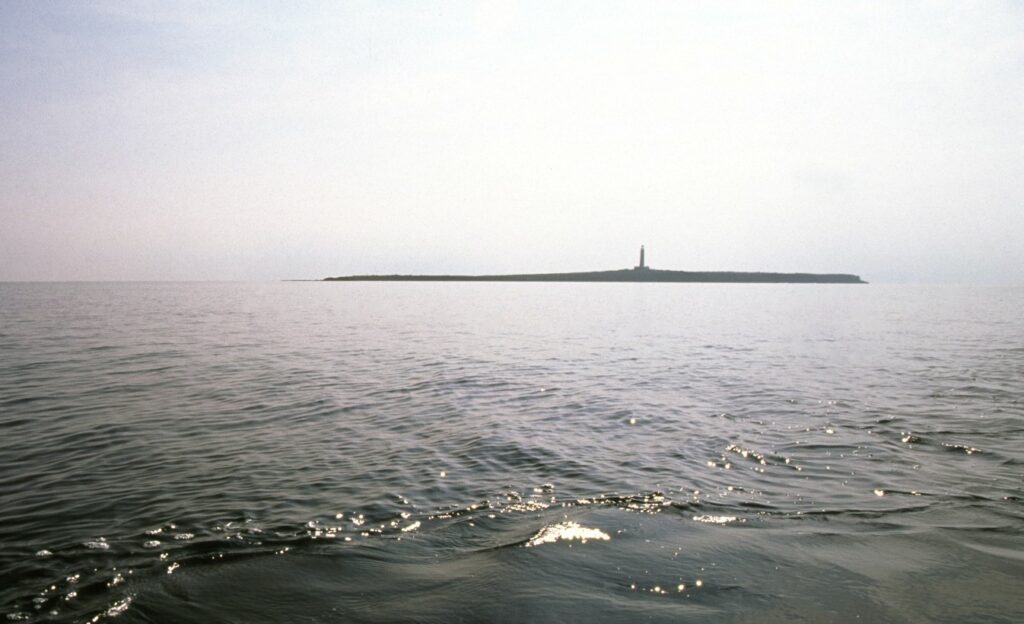
Their immediate goal was to find the small metal ID plate bearing the aircraft’s serial number – a crucial element in identifying both the plane and its crew.
It was expected to be on the starboard side, just below the pilot’s window, or potentially near the middle of the instrument panel within the cockpit. Although underwater visibility was generally good, the overcast weather above reduced the available light, casting a deep blue hue on the water at the depth at which the virgin WW2 wreck rested.
Descending with camera equipment in hand, the divers saw the silhouette of the aircraft gradually emerge in the ethereal blue.
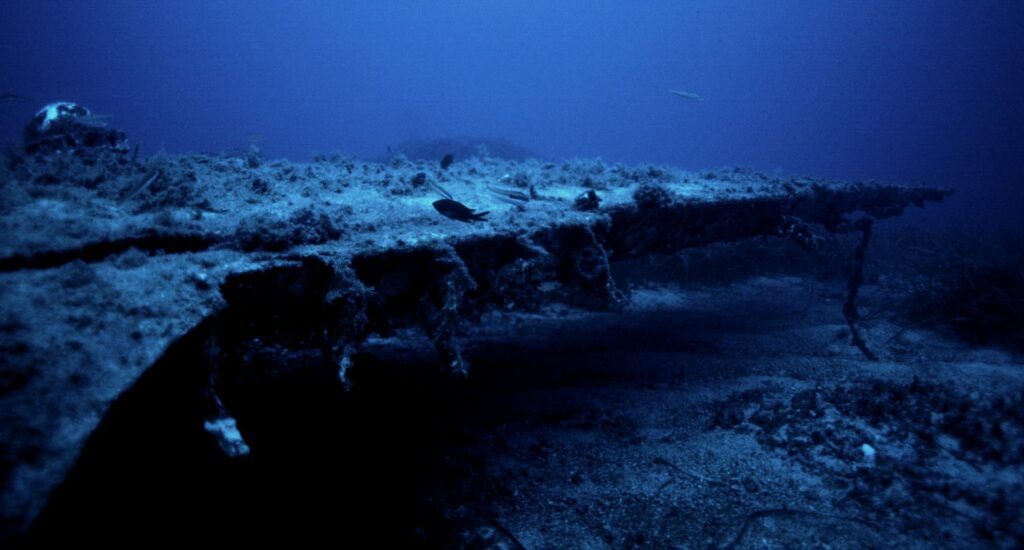


“Diving is always a deeply personal experience, irrespective of who or how many others you happen to be diving with,” Vasilis explains. “This is amplified many times when exploring an unknown wreck, your attention totally absorbed by what you’re seeing. It’s just your own rhythmic breathing and an indefinable feeling of adventure.”
However, elated anticipation was slowly replaced by trepidation as they began to discern the true condition of the Ju-88. The formidable war machine was now home to all manner of marine encrustations clinging to the corroding metal.
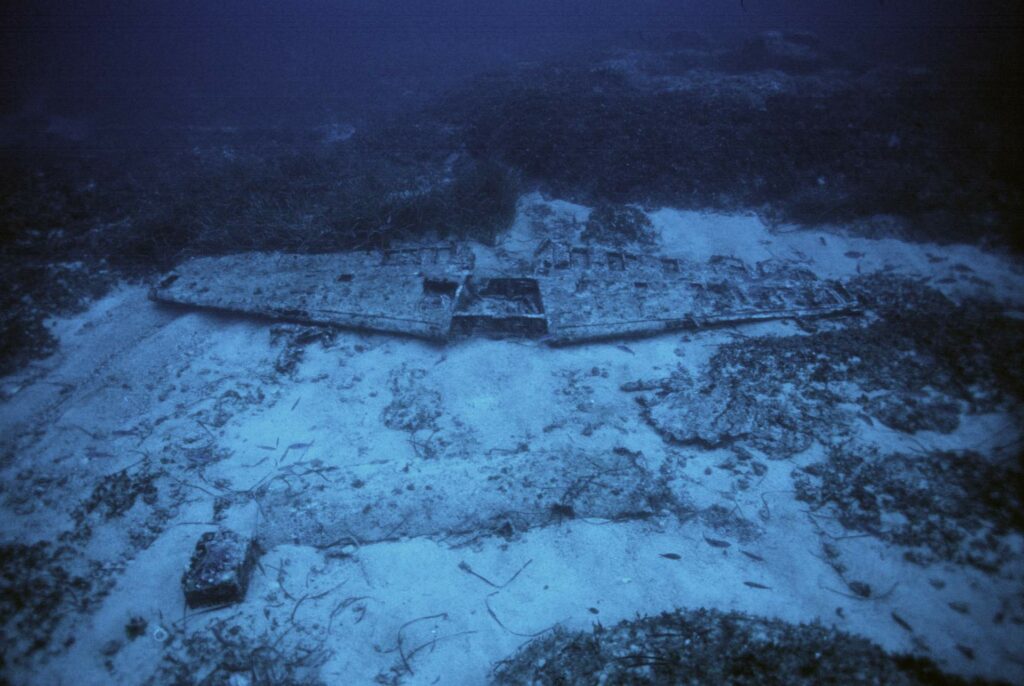
Navigating along the wreck’s dorsal line, they realised that the entire tail-section had disintegrated into fragments. Closer inspection of the majestic 20m wingspan revealed that the twin Jumo 211 engines, once boasting a formidable 1,410hp and a top speed of 290mph, now lay heavily corroded and detached on the seabed.

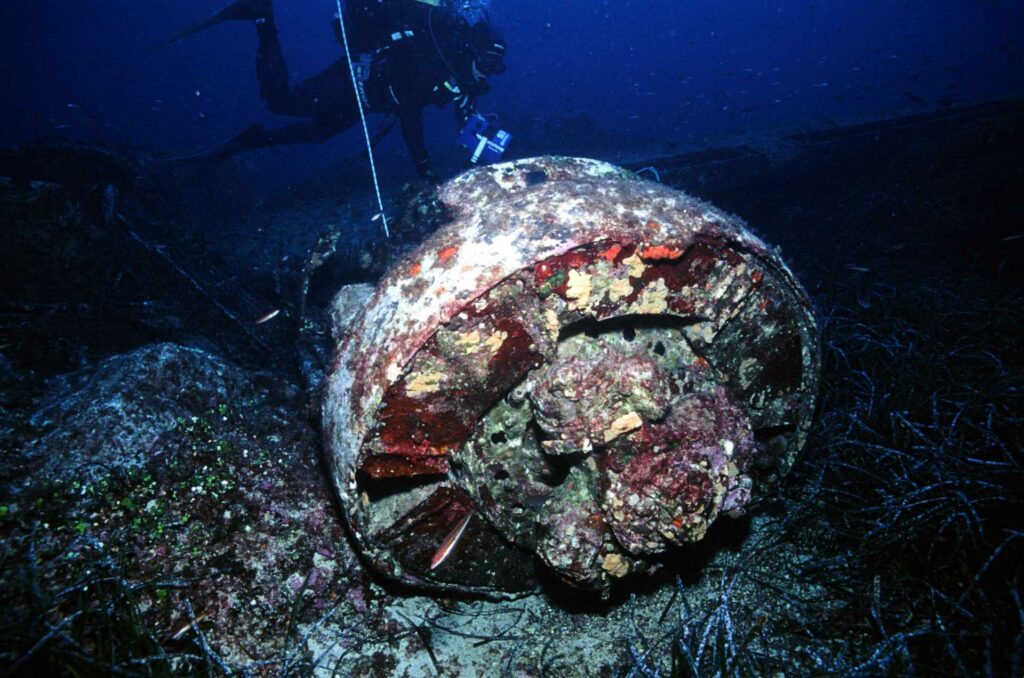
The absence of propellers hinted at the forced ditching, as described in the eyewitness account. There was no direct evidence of combat damage or anything else to explain why the plane had ended up so forlorn at the bottom of the Aegean.
The cockpit, once the proud place of command and control, had been robbed of both its canopy and most of its form. The degradation presented a serious obstacle to the divers’ quest to find the metal ID plate. Scattered instruments, assorted debris and even a crew seat lay all around outside the fuselage.
“I remember that John and I looked at each other for a few long moments, silently contemplating the best course of action as our dive-computers continued to count the remaining time down, and our bubbles streamed upwards to the surface,” Vasilis recounts. “After a few hand-signals and gestures, we began our search in earnest.”
In the hope that the ID plate might still be attached to a fragment of the dashboard or window-frame, they scrutinised any sizeable piece of metal, both inside the remnants of the cockpit and scattered in the surrounding area on the seabed.
Despite their efforts over several subsequent dives, the quest proved fruitless. If they were ever to properly identify the time-capsule they had just discovered, it had to be through some other means.
Irrespective of the disappointment of being unable to immediately identify the aircraft, the intriguing artefacts they managed to salvage provided considerable consolation. These included a distress-flare gun, a lamp, a safety-belt buckle from one of the crew-seats and several bullets.
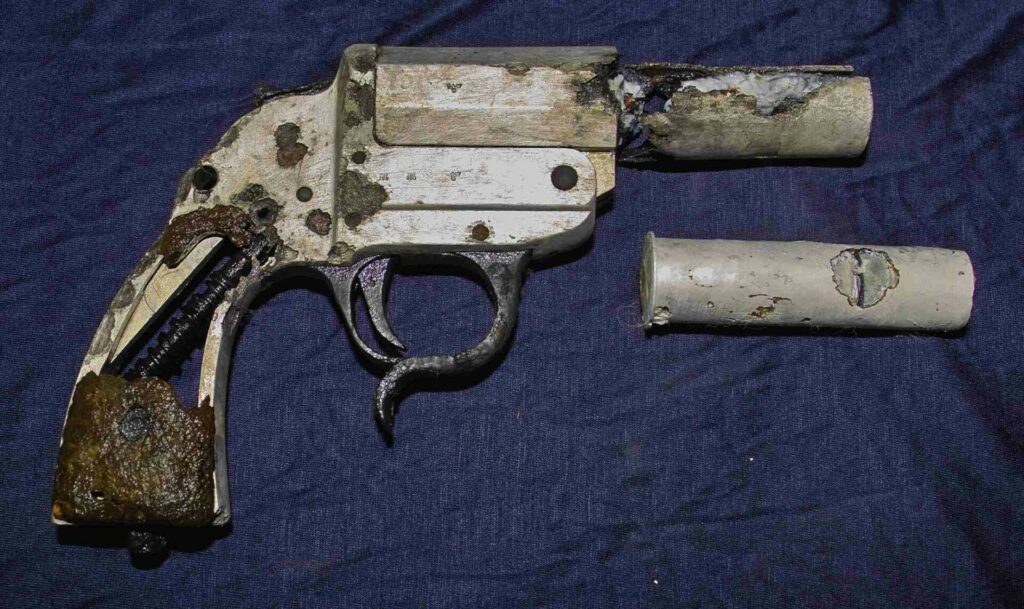
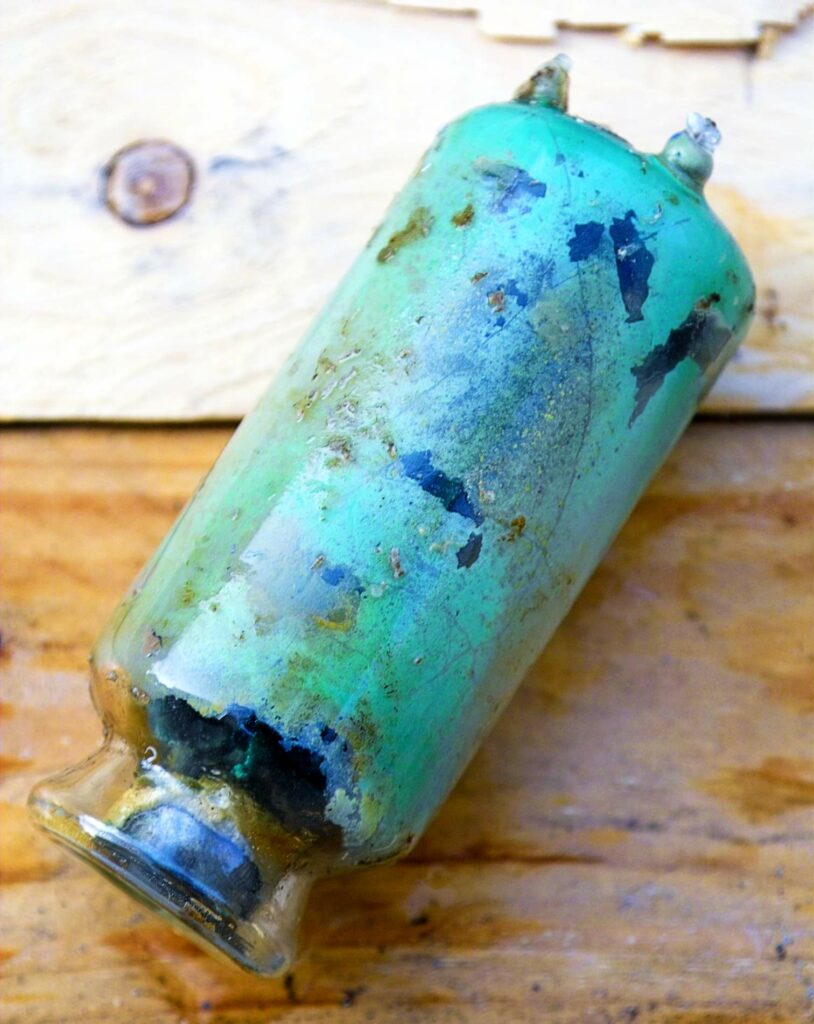


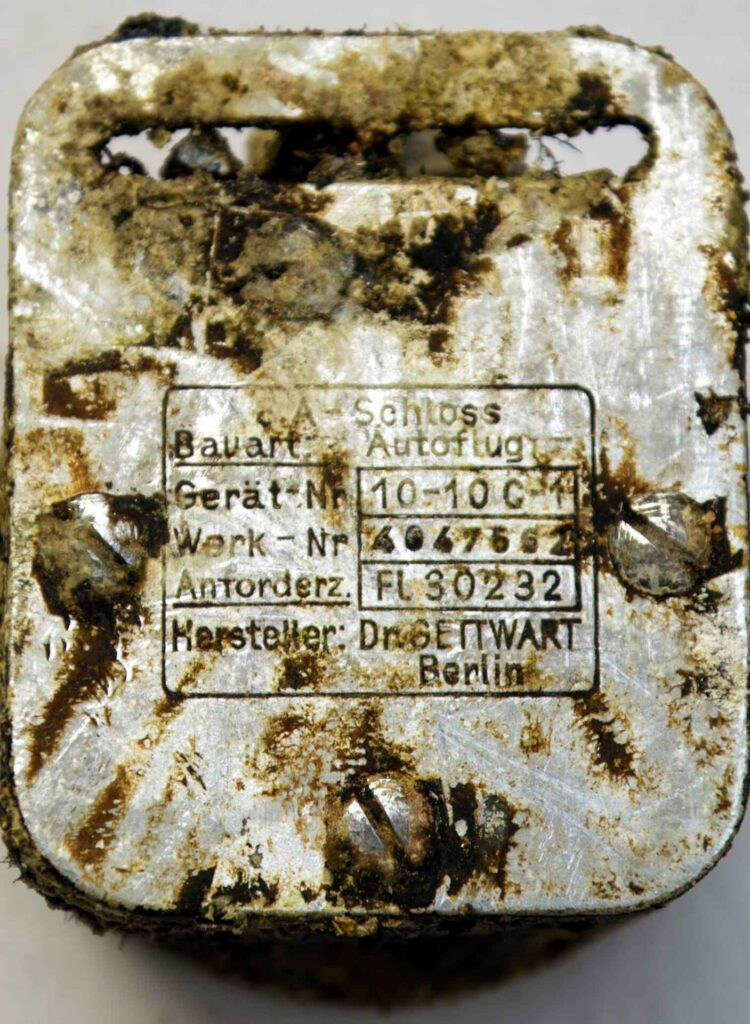
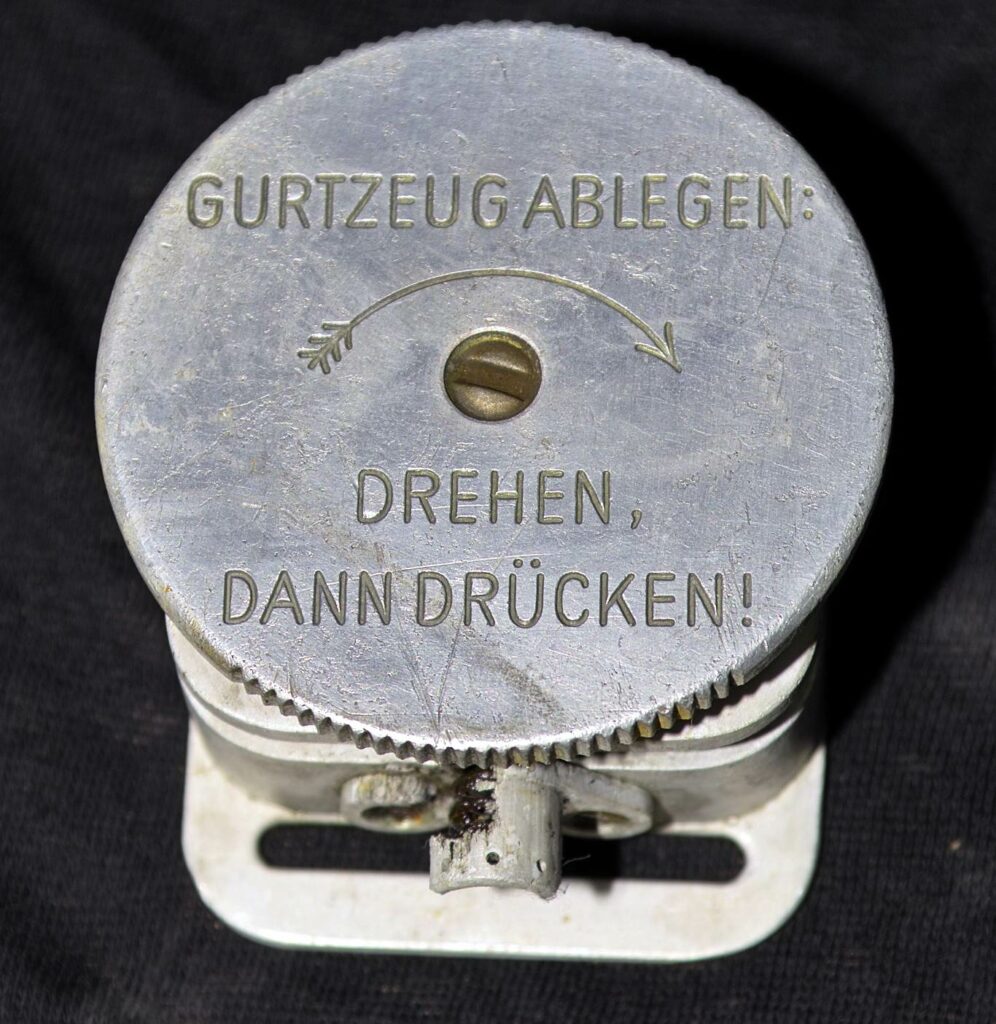


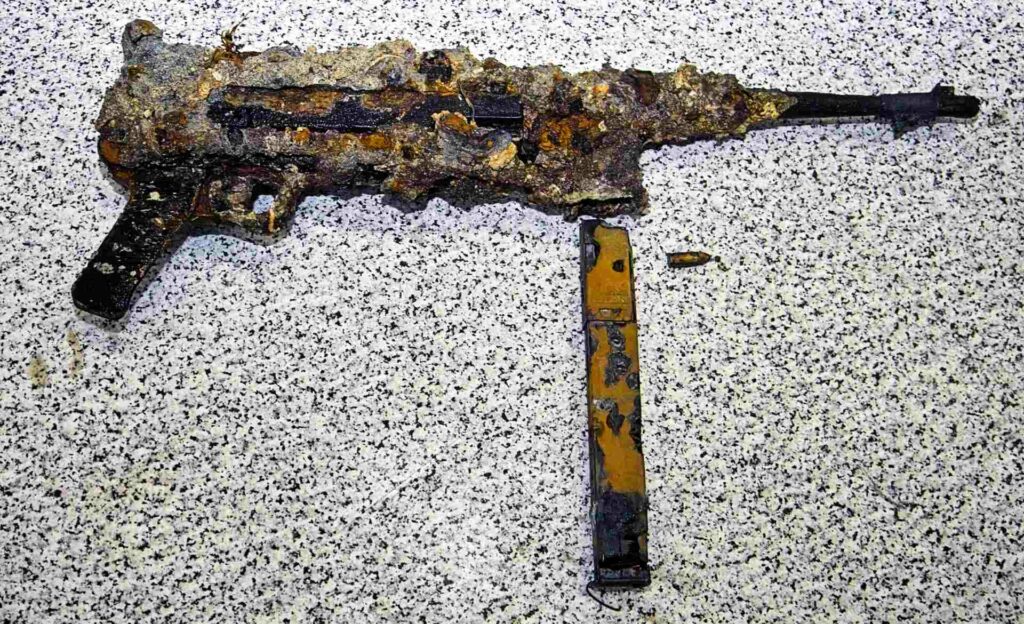
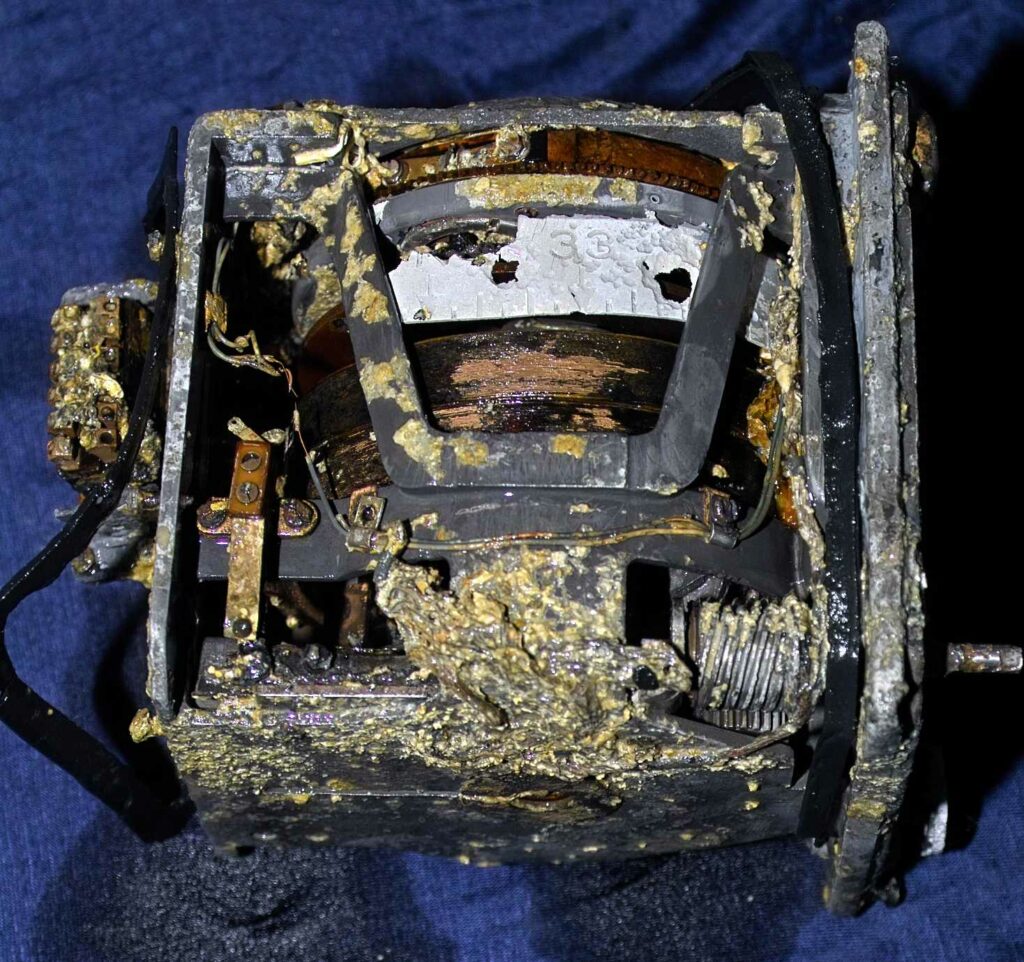
The most notable discovery was an MP-40 Schmeisser sub-machine gun, accompanied by six magazine clips. Recognising the importance of these artefacts and mindful of the potential deterioration from drying and exposure to air, on their return to Athens the two divers promptly turned them over to the Hellenic Air Force Museum for preservation. They are now museum exhibits.
Identifying the aircraft
Having reached out to historians and researchers with all the information he had, Vasilis found himself playing a waiting game.
First to reply was aviation expert Dave McDonald from New Zealand, a writer for Wings magazine. He brought sensational news: the aircraft was a Ju-88 A4 variant, with a war production number of 140225 and call-sign B3+MH.
It belonged to 1./KG 54 (indicating the 1st Squadron of Bomber Wing 54) and had been piloted by Hauptmann (Captain) Haso Holst.

Renowned historian Peter Schenk soon confirmed the identification and offered the Luftwaffe War Diary entries that fundamentally verified George Agalou’s eyewitness account, though there was no mention of pursuit by Allied aircraft.
Instead, it was revealed that the Ju-88 had missed Elefsina airfield, where it was stationed, because of a malfunctioning compass.
The other three crewmen were also named: bombardier Joachim Elsasser, radio operator/gunner Gerhard Richter and rear gunner Alfred John.
The Ju-88 wreck today
In modern times, the area around Alonissos, including Psathoura, has gained marine-park status, providing significant protection for monk seals and the regulation of fishing activities. This also bodes well for preservation of the wreck.
Since 2022, Greece has officially approved recreational scuba diving at 91 designated sites, including the Ju-88 wreck off Psathoura. Regulations mandate paperwork for divers, with strict prohibitions on any disturbance or artefact collection in an effort to safeguard these underwater treasures.
Aligned with the UNESCO conservation agreement on underwater cultural heritage, the initiative prioritises in situ preservation, non-commercialisation and the dissemination of educational information about these culturally significant sites.

Despite – or perhaps because of – its remote location, the Junkers Ju-88 bomber rests in majestic silence, inviting divers with a wide range of skill levels to explore it now that it is officially accessible to one and all.
This extraordinary scuba-diving experience is heightened by the compelling story of the aircraft’s wartime fate and the more recent narrative of its rediscovery. It is not merely a submerged relic, but a tangible testament to WW2 history, submerged in the enchanting waters of the Aegean just waiting to be explored.
VASILIS MENTOGIANNIS is technical director of the UFR underwater filming and research team, specialising as a commercial diver in underwater services and documentation, covering a wide range of projects from the marine construction industry to maritime cultural heritage.
He is one of the co-founders of the Korseai Archaeological Institute, the founder of Hippocampus Marine Institute, and one of the designers of the uNdersea visiOn sUrveillance System (NOUS)
ROSS J ROBERTSON, an Advanced Open Water and Nitrox Diver, is an author and educator with a keen interest in Aegean shipwrecks and Greek WW2 history. Bringing these elements together in numerous magazine and newspaper articles, he is also the curator of the website ww2stories.org
Also on Divernet: Greek divers find Luftwaffe aircraft wreck at 60m, Naxos Beaufighter still flying high for divers, WW2 aircraft wreck latest in string of Estonia finds, 5 bomber wrecks located, as AI learns to find more, Dive / Bomber
